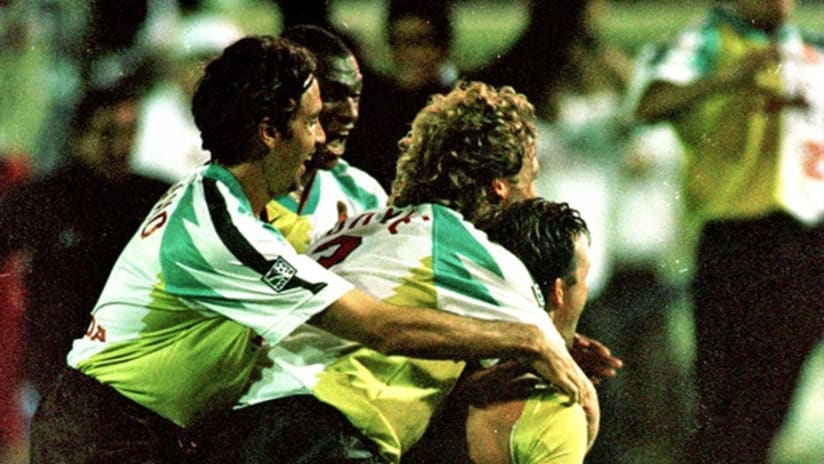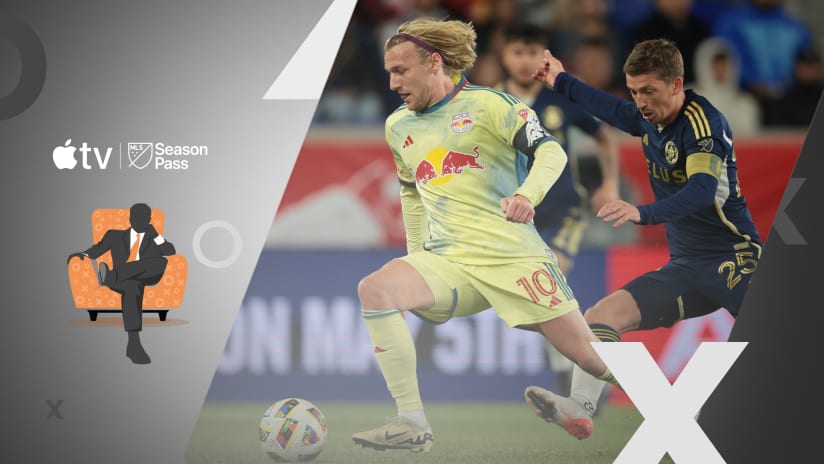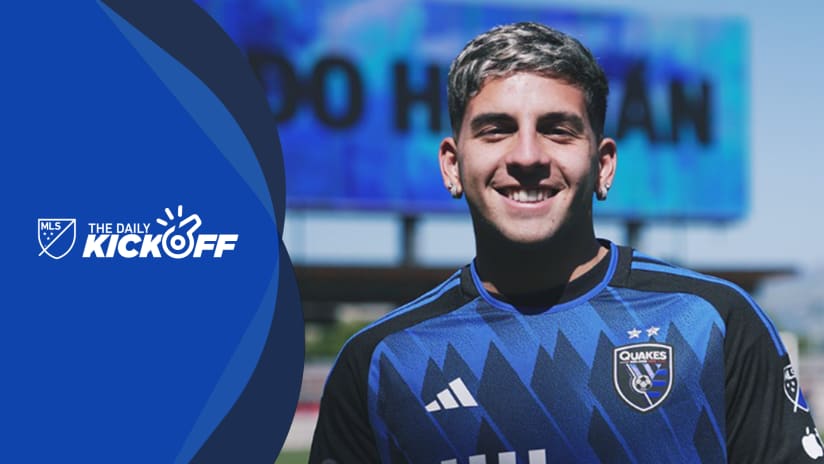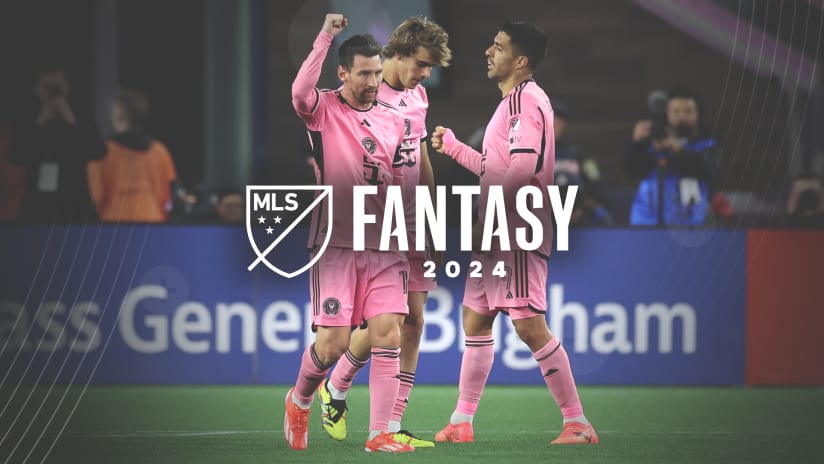In the leadup to the 2015 AT&T MLS All-Star Game, MLSsoccer.com will celebrate the league’s 20th season with a series of articles and videos about the first two decades. This essay, by MLSsoccer.com editor-in-chief Greg Lalas, looks back at the league as seen by someone who has been involved with the league, off and on, since the beginning.
—
I’m not exactly sure when in 1995 we first heard that Major League Soccer was going to start up and finally bring a true, top-flight pro league to America, but I know we weren’t exactly optimistic about its prospects. The powers that be were bringing in some big names from the 1994 World Cup, like Tab Ramos and Carlos Valderrama and my brother, Alexi. But from the perspective of more run-of-the-mill players like me, it didn’t seem all that different from other leagues we’d seen come and go.
At the time, I was one of the hundreds of decent twentysomething players in America – college standouts who had graduated and not had anywhere to play, adventurers who were chasing their dreams in Europe’s backwaters, “stars” of the small-time regional leagues, the indoor guys. We were good players, and we all hoped this new league would be the one to finally stick.
Many of us were invited to the inaugural MLS combine, held in January 1996. That was actually one difference from other leagues that we couldn’t help but notice. They flew just about every good player in America – plus bunch of foreign guys we’d never heard of – to Irvine, California, for 10 days. All expenses paid! That was relatively unheard of back then.
Everyone was there, including players I’d only read about in Soccer America, like Kevin Grimes, John Diffley, and Mark Dougherty. I cooled down at the end of one day, stretching and shooting the breeze with Brian McBride, Jason Kreis, and Brian Maisonneuve. And I remember Martin Vasquez, this Mexican-American midfielder most of us had never heard of, who was so good that Tampa Bay Mutiny made him an “allocated player” well before he could be snapped up by anyone in the impending draft.
The players at that combine – it was actually two combines of five days each – would make up the bulk of the MLS rosters in 1996 and lay the foundation for the league’s player pool for years to come. I still feel honored to have been there.
A few weeks later, I was drafted by Tampa Bay, in the 16th round of the MLS Inaugural Draft, number 157 overall. I went on to play in the league for the next year and a half with Tampa and the New England Revolution. “Play” is a nice way to put it: I made only five appearances for 100 total minutes, but for those 18 months, soccer was my full-time job.
---
Those early years of MLS were magical. And nerve-wracking. We all desperately wanted this thing to work, and despite our ingrained pessimism, we saw signs of hope. The first game, when San Jose hosted D.C. United, we marveled at the full stadium and the fact that the game – our game, our league – was on ESPN. That had never happened!
Our season opener in Tampa against the Revolution (and my brother) drew such a good crowd that even as the game was preparing to kick off, our general manager, Farrukh Quraishi, was scrambling in the stands to remove the vinyl covers that had been used to downsize the capacity. The good times that night were capped off by a 3-2 comeback victory thanks to goals from Roy Lassiter, Ivan McKinley, and Steve Pittman.
When the Mutiny played the MetroStars for the first time in New York, 40,000 showed up at the old Giants Stadium. We took a 3-0 lead, before giving it all up. I’ll never forget the roar of the crowd when Giovanni Savarese scored the team's third goal. I’ll also never forget Valderrama’s long, slow amble across the full length of the field to the tunnel after he got a late red card. The game finished 3-3 and they won in a shootout.
Then there was the epic MLS Cup final at Foxboro. For a kid from the suburbs of Detroit, where professional soccer meant watching the Windsor Wheels play on a bumpy high school field, the fact that 30,000-plus fans stuck it out in a thunderstorm was the greatest validation and accomplishment imaginable.
Little did we know how much farther we had to go.
---
Eventually, I got bored sitting on the bench. I was 25 years old and not playing, and US Under-20 star defender Brian Dunseth was about to join the team, which meant my already non-existent minutes would go to, well, the minor leagues. But I always knew my life was never going to exist fully on a soccer field.
In June of 1997, I told the Revs’ coach, Thomas Rongen, that I quit. I bought a motorcycle and rode to California.
But I couldn’t stay away for long. One night in Utah, I found a Mexican restaurant that served fried ice cream – I’d never seen it before, but now I’ll eat it anytime it’s on a menu – and I asked the proprietors to put the MLS Game of the Week on the TV. At first, they wouldn’t do it. They didn’t care about MLS. They didn’t care all that much about a random guy passing through on his way to the West Coast.
I persisted. If I – a former player in this league – wasn’t willing to act as its champion, who would? I hadn’t made much money as a player, but none of us “little guys” back then were doing it for the money. We were doing it because we loved playing, we had aspirations of playing in a World Cup, and we wanted to see our nation embrace the game the way we did. And by the fall of 1997, I think all of us realized that MLS was the best bet for all of that to happen.
I ordered a second bowl of fried ice cream and pointed again to the TV. The waitress sighed, maybe feeling a little sorry for me, and picked up the remote. A small victory.
---
Since then, I have been involved in MLS off and on, in one way or another, either in a professional capacity as a writer/editor or in my capacity as a lifelong supporter of this game and our league.
I’ve witnessed in person all but two of the MLS Cup finals. I went to Crew Stadium (now MAPFRE Stadium) the year it opened, 1999, to pay my respects to the watershed moment that ushered in the soccer-stadium era. I wept a little when my beloved Tampa Bay Mutiny and the Miami Fusion were shuttered in 2001. I attended Toronto FC’s first home match in 2007, where despite losing, the Reds’ supporters were impressively loud and proud. It’s still one of my favorite soccer experiences ever.
I was there for stadium openers in Chicago, Portland, Philadelphia, Kansas City, Houston, and Montreal. I watched David Beckham’s introduction to the fans and went to Thierry Henry’s debut at Red Bull Arena. I watched Landon Donovan break every league record imaginable, including the career assist record so long held by my former Mutiny teammate Steve Ralston.
Looking back on it all now, I realize how lucky I’ve been to be a small part of it all.
Back in the 1990s, when people would ask me if MLS would last, I would reply, “If it can last 10 years, it’ll last forever.” Then, after it hit the decade mark, I revised that to, “If it can last 20 years, it’ll last forever.”
Nowadays, people don’t ask.














